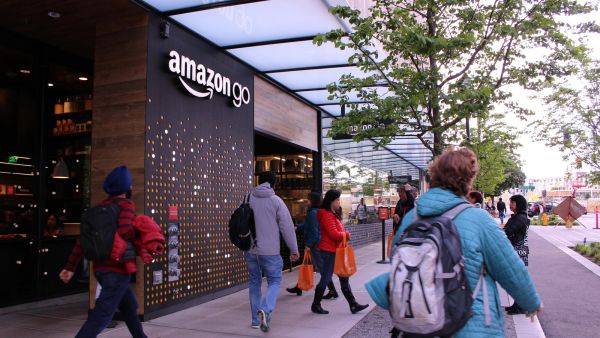Despite achieving huge success as purely online businesses, Amazon and Uber are slowly making their way back to the physical world, with Amazon opening its first cashierless grocery store in Seattle, and Uber testing rooftop ads in three US cities.
Amazon opens its first full-sized cashless Go Grocery storehttps://t.co/falmri2TrD pic.twitter.com/MPOaJazn0w
— Gizmodo (@Gizmodo) February 25, 2020
Amazon's first brick and mortar shop retains many digital elements, as customers will need to scan their smartphones at the entrance as sort of an access key, while cameras and sensor technology keep track of their purchases as they take them off the shelves. Eventually, items are charged to an Amazon account linked to the smartphone.
With this innovative store, Amazon's move has been questioned over what could be a return to traditional shopping as opposed to its flagship online shopping. There are suggestions that this could be a way to get around surprisingly low numbers of people who actually shop online for groceries and other day-to-day products.
In Ideas: Will Amazon make a success of its #AmazonFresh grocery service? https://t.co/ZlI2JoQej2 pic.twitter.com/BNKDKFxEcp
— Matt Gooding (@MattGoodingBiz) June 14, 2016
According to a study published by The Atlantic, only 3% of grocery sales took place online during 2018. Also, an NPR/Marist Poll revealed that 56% of shoppers still appreciate shopping experiences that include a human element over digital retail.
Such findings may have pushed Amazon to launch its first full-size grocery store, especially that its Prime Pantry service for online grocery purchases launched in April 2014 hasn't managed to hit the targeted success it aimed for six years ago.
Uber Ads
In partnership with the ad-tech company Adomni, Uber announced plans to test rooftop ads in Atlanta, Dallas and Phoenix, in what has been perceived as the company's attempt to increase its revenue and minimize its losses, by using traditional advertising tools.
Uber will put ads on top of vehicles just like old-school taxis https://t.co/BjrHVtFA6l pic.twitter.com/y43NnfbJKq
— Gizmodo (@Gizmodo) February 24, 2020
Even though Uber has always tried to promote its services as the counter alternative to old-school taxis, Uber OOH will be the company's first business expansion outside of the digital world, where it has been running its online ride-sharing service.
Uber is now encouraging drivers to install vehicle-toppers for an additional $100 for every week they drive more than 20 hours.
Both decisions could be a sign that online businesses are recognizing that the physical world still plays a vital role in spite of today's rapid digitization of services and profits.







